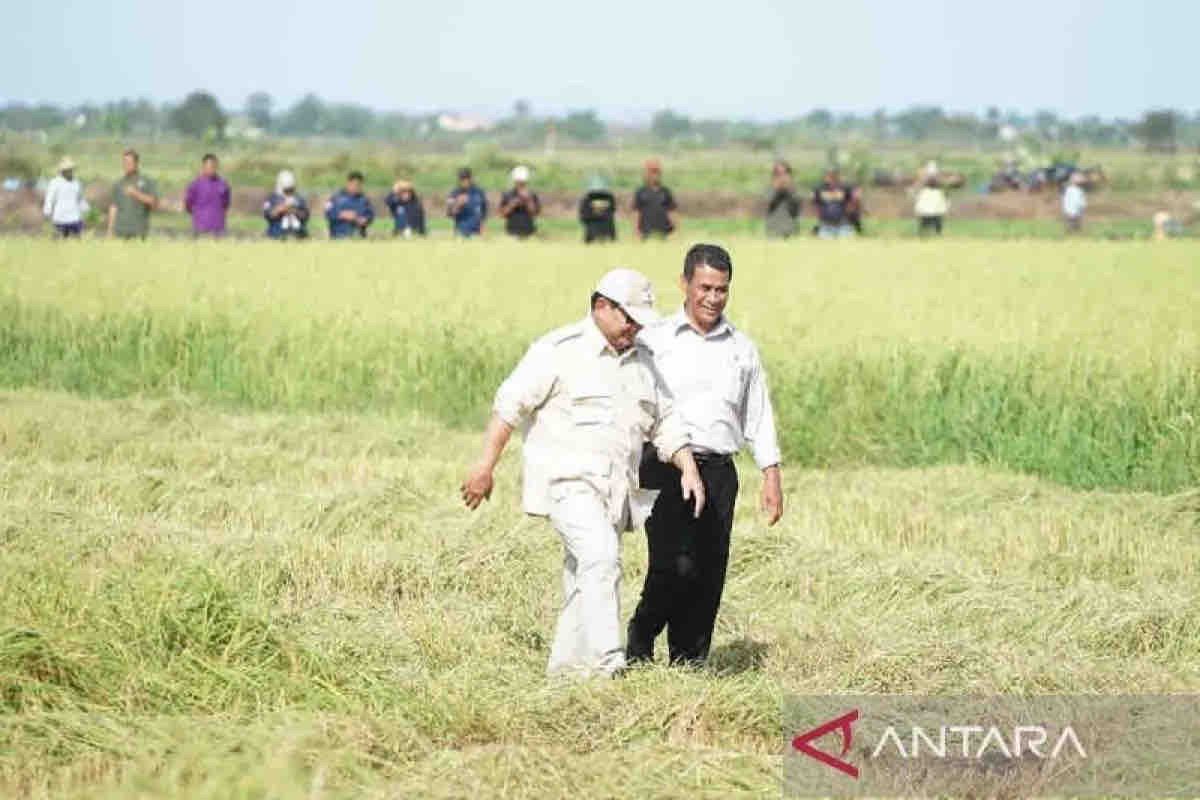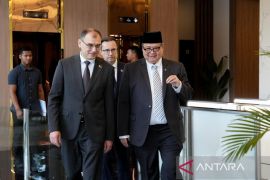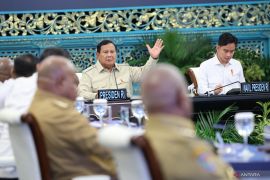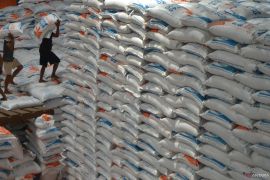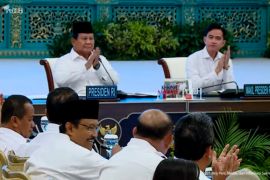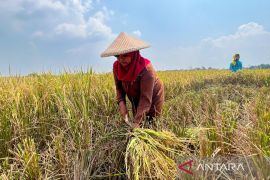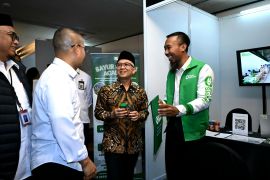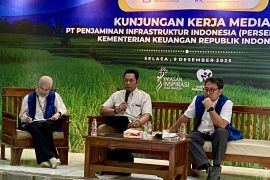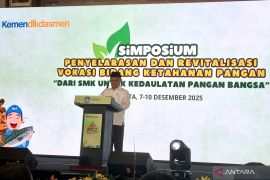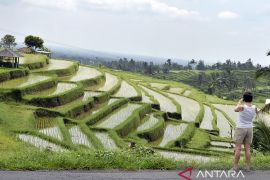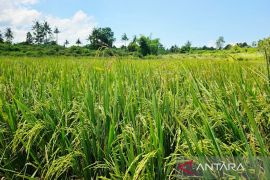Indonesia is continuing to build food security through the empowerment of farmers, the use of agricultural technology, and cooperation with other ministries and agencies.
Last year was an important moment for the Ministry of Agriculture in reviving the agricultural sector. To realize food security and improve farmers' welfare, the ministry continued to launch strategic programs and policies for agricultural modernization.
The Ministry of Agriculture is committed to taking agriculture in a more productive and sustainable direction.
One of the major steps taken to achieve this end has been the utilization of advanced agricultural technology. In 2024, the ministry took a number of initiatives to integrate technology with the agricultural production process.
Technologies such as drones for crop monitoring and agricultural machinery are being used to simplify the agricultural process with the hope of increasing productivity.
The use of agricultural technology is also aimed at boosting efficiency and harvests, while at the same time, reducing dependence on conventional methods.
Land optimization
To increase food production, the government has shifted its focus from agricultural land in Java to utilizing land in central and eastern Indonesia.
One of the areas currently being focused on is Merauke District, South Papua, which is predicted to become a food center in eastern Indonesia.
The government has implemented a swamp land optimization program there to significantly boost agricultural productivity.
In the region, land that originally yielded only 2–3 tons per hectare can now yield 6 tons per hectare. This optimization has involved the use of modern technology and more efficient management.
According to Minister of Agriculture Andi Amran Sulaiman, 1,002 units of agricultural machinery have been distributed to Merauke, including tractors, rice transplanting machines, water pumps, combine harvesters, and hand sprayers.
In addition to Merauke, South Kalimantan is also being seen as a strategic region to bolster national food security. The Ministry of Agriculture is currently developing new rice fields over an area of 500 thousand hectares in the province.
The province has great potential to help meet the national food demand, especially for rice. With the right agricultural technology and management, lands in South Kalimantan are being cultivated to increase food production significantly.
The program focuses on converting former peatlands into productive rice fields. With the improvement of irrigation infrastructure, these lands can now be used for agriculture more sustainably.
In this province, particularly Kapuas District, the ministry is also targeting to convert 500 thousand hectares of land into rice fields.
The government is committed to continuing to optimize existing lands, both those that have been managed and those that are still abandoned.
Water pumping optimization
Head of the public information bureau of the Ministry of Agriculture Moch Arief Cahyono informed that the ministry's pumping program has helped irrigate 1.1 million hectares of rain-fed rice fields across Indonesia.
Through the program, rice fields that previously could only be planted with rice once a year can now have two to three harvests per year.
With more than 61 thousand water pumps distributed in 2024, the ministry is seeking to accelerate the fulfillment of water needs in agricultural land.
This is a strategic step to ensure that farmers can maximize their harvests despite the challenge of unpredictable weather.
The government is continuing to strive to provide adequate tools and production facilities for farmers.
With pumping and land optimization, farmers can increase production. They can also support more stable food security.
Furthermore, the government is also focusing on providing superior-quality seeds, fertilizers, and agricultural machinery to ensure the sustainability of domestic food production.
With the support, farmers can access efficient agricultural facilities more easily and improve the quality and quantity of harvests.
More subsidized fertilizers
The Ministry of Agriculture increased the budget for fertilizer subsidies in 2024 to Rp54 trillion from Rp28 trillion previously. It also raised the quota of subsidized fertilizers from 4.5 million tons to 9.55 million tons.
The increase in budget was aimed at accelerating the planting process and boosting agricultural productivity to achieve food self-sufficiency.
With the larger budget allocation for subsidized fertilizers, the government hoped to help farmers meet their needs and ensure sufficient food availability in the country.
The distribution of subsidized fertilizers was monitored by authorities, including the Indonesian Military (TNI), the National Police (Polri), and regional governments, to avoid irregularities.
In addition, regulations regarding the distribution of subsidized fertilizer were also simplified to make the distribution more efficient and targeted.
The simplification process involved reducing up to 147 rules that have so far limited the distribution of fertilizers to farmers.
With the new regulation, the distribution of subsidized fertilizers will be managed through the Ministry of Agriculture alone, which is expected to increase efficiency and accountability.
Farmer regeneration
Drawing young farmers to the sector is crucial to improve agricultural productivity, especially in responding to the challenges of modernization and pushing the use of modern agricultural tools and machinery.
Deputy Minister of Agriculture, Sudaryono, underscored the importance of the role of the younger generation in developing the agriculture sector to achieve food sufficiency.
Young farmers can play a key role in realizing positive change through the introduction of modern agricultural technology that can increase efficiency.
The Ministry of Agriculture is targeting to recruit 50 thousand young farmers as part of efforts to involve the younger generation in developing modern agriculture.
As part of this program, young farmers will be provided with high-tech agricultural tools and machinery. This is expected to boost efficiency in land management.
The young farmers could earn an income of at least Rp10 million (around USD616.5) per month.
This is aimed at improving the welfare of farmers and attracting the younger generation.
With the use of technology and machinery, the agriculture sector is expected to be more productive and have higher competitiveness.
Rice production
Indonesia's rice production in 2024 was relatively robust, despite challenges from natural factors.
Agriculture Minister Andi Amran Sulaiman said that total rice production reached around 30 million tons, or nearly 31 million tons, as of the end of December 2024.
Initially, Indonesia's rice production was forecast to experience a large deficit, with a projected supply shortage of around 5 million tons.
This was due to the impact of El Nino and La Nina phenomena, which caused significant climate-related disturbances in several rice-producing areas.
However, Indonesia's rice output only experienced a small decline of around 500 thousand tons compared to the previous year.
The decline was much smaller than expected, indicating the strong resilience of the country's agricultural sector in facing natural challenges.
Land optimization, water pumping, increasing subsidized fertilizers, and synergy between ministries and institutions are important to achieve the target of producing 32 million tons of rice in 2025 as well as building food self-sufficiency by 2027, as targeted by President Prabowo.
Related news: Prabowo pushes food barns in each village for food sufficiency
Related news: Minister Hasan shares strategy for food self-sufficiency
Editor: Rahmad Nasution
Copyright © ANTARA 2025
